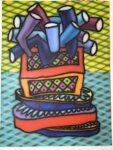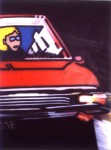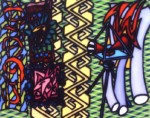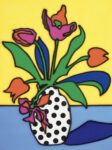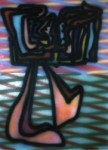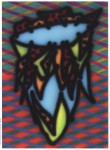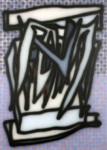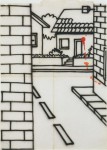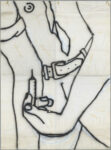1986
1986 Works
Paintings
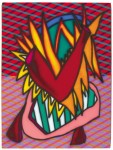
Shown in HA Tolarno 9/86; widely known through its inclusion in the Budget ‘Young Australians’ collection, which toured various Australian venues 1987-89.
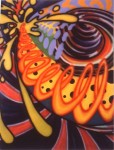
This work, shown in HA Tolarno 9/86, was later used as the basis for Arkley’s Sydney mural project, and was reprised in Explosion [Ericsson] 1996.
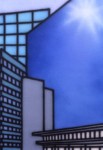
This ‘Pop version of a Mies van der Rohe building’ (as it is described in Spray) was first shown in HA Tolarno 9/86.
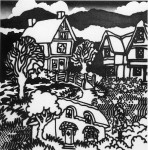
First exhibited, with its brightly coloured twin, Tudor Village (1986), in the ‘5AR: artists and architects’ show at the George Paton Gallery in June 1986.
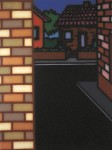
First shown in HA Tolarno 9/86, its unusually dark tonality lends it a particularly brooding, ‘unhomely’ quality.
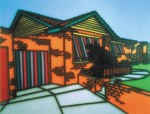
This key example of Arkley’s emerging suburban theme was first shown in his 1986 Tolarno exhibition.
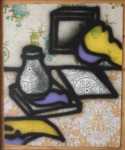
An interesting collaged work that sheds light on Arkley's continuing interest in wallpaper during the 1980s.

To the MCA with the Smorgon Collection in 1995. The exploding box form at right first appeared in Arkley’s work in 1983.
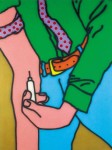
A controversial acquisition for the State Library of Victoria in 1988, this was one of the views of the urban / suburban scene represented in Arkley’s signature solo shows at Tolarno and Roslyn Oxley9 in 1986 and 1987.
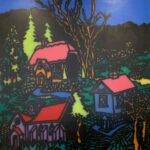
First shown, with its black-and-white pendant, Model Tudor Village, Fitzroy Gardens (1986), in the ‘5AR: Artists and Architects 86’ exhibition, June 1986
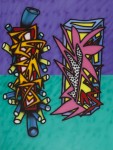
This work, purchased from Tolarno in 1986, modifies the cactoid imagery of Untitled [Lanced Lace] 1983 [W/P] and related works.
Works on Paper
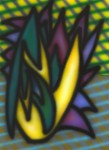
‘Wigginsia', wrote a 1987 reviewer, 'in its purple/green/yellow glory, could be regarded either as graffiti gesture or simply colorful kitsch’.
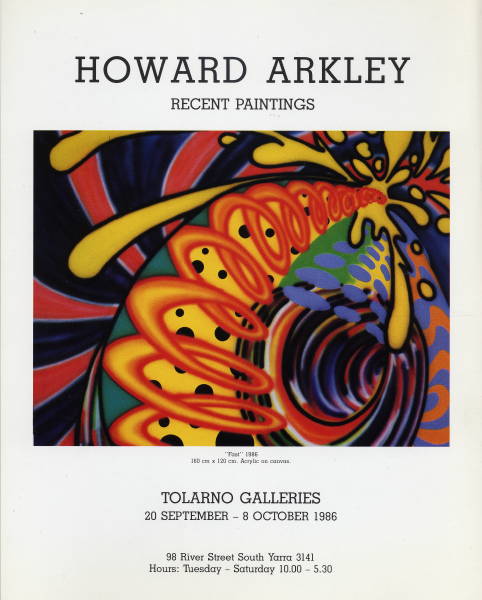
After several years of working mostly on paper, and developing numerous ideas and schemes in his sketchbooks and visual diaries, Arkley now returned decisively to painting.
His 1986 canvases reprised earlier themes – cacti, psychedelic imagery etc. – while also exploring new urban and suburban topics, including the Tudor village theme (for the ‘5AR’ show in June). Nubrick and Our Home, two key examples of his developing suburban imagery, were included in the Tolarno show in September-October, where his style evinced a new clarity and edge.
1986 Exhibitions
‘Slouching Towards Bethlehem’, 200 Gertrude St., 14 April-17 May 1986 (curated by Geoff Lowe; catalogue in Arkley’s files)
- 4 Nudes – The Chateau of Fire 1984: see Mills & Boon books
‘5AR: Artists & Architects 86’, George Paton Gall., Melb.U., 5-27 June 1986 (curated by Val Austin; copy of catalogue in A = special issue of Transition June 1986; Arkley was teamed with architect Howard Raggatt)[1]
- Tudor Village in Black & White = Model Tudor Village, Fitzroy Gardens 1986
- Tudor Village Coloured = Tudor Village 1986
‘Primal Painting’, Heide, 1-27 July 1986 (curated by John Nixon; catalogue in A)
‘Howard Arkley: Recent Paintings’, Tolarno, Sept.- Oct.1986
- refer linked entry for full details
‘33 Men Painters’, Heide (curated by Caroline Williams; catalogue in A)
- Feet 1983 = Tattooed Feet 1983
Hugh Williamson Prize, Ballarat Art Gallery
- Untitled triptych 1986 (3 canvases, each 121 x 160) = Agave Parviflora 1985 and two unidentified canvases (ref. Ballarat catalogue 1986, reproducing the 1985 canvas)
‘Victoria: views by contemporary artists’ (touring exh.) Castlemaine etc.
- see 1985
[1] Critics felt this pairing typified the rather undeveloped collaborative premise of this exhibition: see in particular Duncan 1986.
